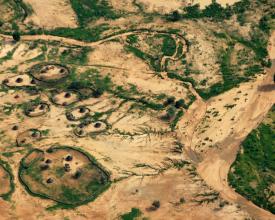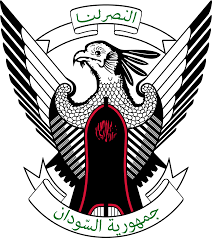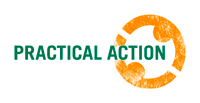
Sécurité alimentaire et résilience aux catastrophes grâce à une gestion durable des zones arides

Le projet a utilisé une combinaison de mesures basées sur l'écosystème (revégétalisation et protection de l'écosystème) et d'infrastructures grises (réhabilitation d'une structure de rétention d'eau) pour accroître la sécurité alimentaire face à la sécheresse et aux crues soudaines, tout en renforçant la gouvernance environnementale au niveau local. L'utilisation d'une approche hybride vert-gris est probablement l'approche la plus appropriée dans le contexte des zones arides du Soudan.
Le projet a adopté une approche de réduction des risques de catastrophes basée sur l'écosystème (Eco-DRR) en travaillant dans un cadre de dangers (sécheresse et crues soudaines), de vulnérabilité (due à la zone de conflit et aux pratiques non durables) afin de réduire les risques de catastrophes (par exemple, la famine). Cependant, la sécheresse et les précipitations irrégulières augmentent en raison du changement climatique et, par conséquent, les mesures basées sur l'écosystème entreprises permettent également l'adaptation (elles sont donc également de l'EbA).
Contexte
Défis à relever
Le Dafur est confronté à la sécheresse et à des crues soudaines qui s'aggravent en raison du changement climatique et de la désertification. Il y a également en toile de fond des troubles politiques et des conflits. Un groupe de rebelles a contrôlé la région de 2004 à 2011. Le conflit de Dafur a déplacé des personnes et a également exacerbé l'utilisation non durable des ressources naturelles, ce qui a entraîné des tensions et des conflits entre les utilisations des ressources (par exemple entre les agriculteurs et les éleveurs).
Emplacement
Traiter
Résumé du processus
L'établissement de partenariats et l'engagement des communautés (bloc 1) sont les fondements de la mise en œuvre d'interventions appropriées sur le terrain (bloc 2) et de l'amélioration de la gouvernance des ressources naturelles (bloc 3). Enfin, le développement des capacités au niveau local et national pour les mesures basées sur les écosystèmes (bloc 4) garantit la durabilité des interventions.
Blocs de construction
Création de partenariats et engagement communautaire
L'établissement de partenariats solides aux niveaux local et national et la collaboration avec la communauté locale sont essentiels pour la mise en œuvre, la réussite globale et la durabilité du projet.
En outre, il était essentiel de relier les communautés locales aux organes gouvernementaux et de veiller à ce que l'État s'approprie les activités, de sorte que tout soutien futur puisse être sollicité auprès du gouvernement.
Facteurs favorables
Le PNUE disposait de solides partenariats de longue date (avec les parties prenantes locales et les partenaires de mise en œuvre locaux et nationaux) dans la zone du projet.
Leçon apprise
Dans un contexte fragile comme celui du Soudan, des partenariats de longue date sont essentiels à la réussite du projet.
Au cours de la mise en œuvre des activités communautaires, on a appris que les projets communautaires doivent être le moins exigeants possible en termes de temps et d'énergie de la part des membres de la communauté, et veiller à ce que le calendrier des activités corresponde à celui des communautés, étant donné que les activités du projet nécessitent généralement un travail bénévole.
En outre, lorsque les communautés voient clairement les avantages des interventions, elles sont davantage disposées à mettre en œuvre et à poursuivre des activités similaires par elles-mêmes à l'avenir. Les interventions qui présentent des avantages moins directs en termes de moyens de subsistance nécessitent un bon dialogue et des campagnes de sensibilisation.
Interventions sur le terrain
Les interventions sur le terrain étaient les suivantes
- Réhabilitation d'une structure hydraulique pour augmenter les cultures et reverdir l'oued (infrastructure grise)
- Création de pépinières communautaires
- Reboisement communautaire
- Réensemencement des pâturages
- Contrôle de l'érosion des sols pour résoudre le problème de l'érosion par ravinement dans la région (par l'aménagement de terrasses et de barrages de retenue avec des matériaux locaux).
Tous ces travaux ont été entrepris avec la participation de la communauté. Des groupes de femmes gèrent les pépinières et les forêts communautaires. Quatre des cinq forêts ont été créées à l'aide de plants provenant de la pépinière, tandis que la forêt naturelle d'un village a été réhabilitée et est protégée contre le pâturage du bétail.
Facteurs favorables
La communauté locale a fortement adhéré au projet et a apporté une contribution substantielle en nature pour les interventions sur le terrain qui leur ont été manifestement bénéfiques.
Leçon apprise
Il a été difficile de concevoir les bonnes interventions basées sur les écosystèmes en raison de la disponibilité limitée de l'eau et du fait que la jeune végétation est plus vulnérable aux périodes de sécheresse. L'accès à l'eau et l'amélioration des moyens de subsistance étaient donc prioritaires. En effet, tout arbre planté serait coupé si les moyens de subsistance n'étaient pas également améliorés par d'autres moyens. Une combinaison d'infrastructures grises et vertes était donc nécessaire. La réhabilitation d'une structure de rétention d'eau, l'amélioration des rendements agricoles et le reverdissement du paysage ont permis d'atténuer la pression exercée sur les sols les plus fragiles.
Il n'a pas toujours été facile de protéger les forêts nouvellement plantées contre le pâturage. Après discussion avec la communauté, il a été convenu de mettre en place un système de surveillance rotatif afin d'assurer la vigilance contre le pâturage incontrôlé. Les projets futurs pourraient bénéficier de la sélection d'espèces forestières nécessitant une protection minimale, par exemple des arbres et des arbustes peu appétissants.
Gouvernance des ressources naturelles
Le projet visait à améliorer la gouvernance des ressources foncières et hydriques au niveau communautaire afin de renforcer la résilience des communautés face aux risques liés à l'eau et de promouvoir une gestion durable des zones arides. Plusieurs mesures ont été prises à cet effet :
- Création d'un comité de gestion des ressources en eau responsable de la structure de rétention de l'eau, de l'alerte précoce et de la préparation aux inondations et à la sécheresse, et de la distribution proportionnelle de l'eau. Le comité assure également la liaison avec les programmes de gestion des paysages plus vastes, le gouvernement et les ONG.
- Délimitation de la route migratoire pour les communautés pastorales afin de réduire les conflits potentiels liés à la pénétration des animaux dans les terres agricoles et à l'empiétement des fermes sur les pâturages.
- Mise en place de fonds renouvelables pour l'agriculture (banque de semences) et les médicaments pour le bétail afin de soutenir les activités de subsistance et de fournir des services continus à long terme.
Facteurs favorables
Le projet Eco-DRR a complété une autre initiative plus importante du PNUE, connue sous le nom de projet de gestion du bassin versant de Wadi El-Ku (WEK) au Darfour du Nord, mis en œuvre le long du même wadi et à peu près en même temps. Le projet WEK démontre comment une gestion efficace et inclusive des ressources naturelles peut améliorer les relations sur les ressources naturelles, contribuant ainsi à la consolidation de la paix et à l'amélioration des moyens de subsistance des communautés touchées par le conflit.
Leçon apprise
La gouvernance des ressources naturelles nécessite un dialogue avec les parties prenantes afin de comprendre les besoins des communautés concernées et d'assurer une mise en œuvre réussie des mesures. En outre, l'implication des autorités nécessaires (par exemple, en reliant le comité de gestion de l'eau au gouvernement et aux ONG pour l'assistance technique et le financement ; et en impliquant le gouvernement et toutes les parties prenantes concernées pour la démarcation de la route migratoire) contribue à assurer la durabilité du projet. Il est également important que ces activités soient reproduites dans le cadre d'autres projets (par exemple, le projet WEK et d'autres projets). En effet, la démarcation de la route migratoire a été étendue de 10 km à un total de 120 km.
Renforcement des capacités locales et nationales
Le projet a investi de manière significative dans le renforcement des capacités au niveau local et national par le biais d'une sensibilisation à l'EbA/Eco-DRR, d'activités d'apprentissage pratique sur le terrain et d'ateliers de formation. Le projet a veillé à ce que les femmes fassent partie des personnes formées dans toutes les activités.
Le renforcement des capacités locales a ciblé principalement les cinq villages où les interventions ont eu lieu, mais a également impliqué des représentants des villages qui ont participé à l'extension des interventions du projet à une plus grande zone de l'oued dans la partie amont. La sensibilisation favorise le dialogue sur les écosystèmes des zones arides et les questions de gestion des risques de catastrophe.
Des agents de vulgarisation agricole (deux par village) ont été formés en raison de la présence limitée du gouvernement dans les villages pour fournir des services de soutien à la vulgarisation agricole. En outre, huit agents communautaires de santé animale, également appelés "paravets", ont été formés à l'élevage, au traitement, aux médicaments pour animaux, à l'alimentation et à la vaccination, dans le cadre de sessions théoriques et pratiques. Les "paravets" ont également surveillé les zones de pâturage réensemencées.
Une formation nationale et une formation au niveau de l'État sur l'Eco-DRR ont également été organisées.
Facteurs favorables
La majeure partie du renforcement des capacités s'est déroulée sur le terrain, dans le cadre d'un "apprentissage par la pratique", par la mise en œuvre d'interventions sur le terrain telles que la création et la gestion de pépinières, le réensemencement des terres de parcours et le reboisement.
Leçon apprise
Les formations de renforcement des capacités locales proposées aux communautés améliorent les chances de continuité dans la gestion des interventions sur le terrain.
L'atelier organisé au niveau de l'État a lancé une série de dialogues au Darfour Nord sur l'importance d'établir un forum servant de plateforme pour une gestion des ressources naturelles qui soit à la fois inclusive et consciente des risques liés à l'eau. L'organisation de telles formations au niveau national et au niveau de l'État aide à intégrer les mesures basées sur les écosystèmes dans les politiques et les programmes nationaux. En effet, la GIRE a été identifiée comme une mesure clé pour réduire les risques de catastrophes et s'adapter au changement climatique et aux conditions météorologiques extrêmes, ce qui s'est reflété dans le programme d'action national qui a été le principal résultat de la formation nationale.
Impacts
Le projet a permis d'améliorer la sécurité alimentaire et de réduire la vulnérabilité à la sécheresse de 17 500 personnes. Grâce à l'amélioration du système de rétention d'eau, l'augmentation des récoltes au cours d'une année de bonne pluviométrie en 2014 a permis de combler le déficit alimentaire causé par l'échec de la saison des pluies en 2015. L'augmentation des terres cultivables a également permis de cibler les ménages vulnérables et de les aider à bénéficier d'une meilleure production agricole tout en réduisant la pression sur le paysage environnant.
La résilience environnementale a également été renforcée grâce à la création de forêts communautaires et au réensemencement des pâturages. Ces mesures ont permis de protéger les terres contre l'érosion, de les revégétaliser et de reverdir le paysage, tout en offrant aux ménages des revenus supplémentaires grâce à la récolte de la gomme arabique.
Les conflits liés aux ressources naturelles ont été réduits grâce à la création d'un comité de gestion de l'eau, à la délimitation d'une route migratoire pour les éleveurs et à des consultations régulières des parties prenantes.
Bénéficiaires
17 500 habitants sur une population totale de 30 000 dans cinq villages (Eid El Beida, Abudelik, Bahr Omdurman, Wad Kota, Waa'dha) de la localité de Kilimondo, au Darfour Nord.
Objectifs de développement durable
Histoire

Les populations vivant le long d'un plan d'eau saisonnier dans le nord du Darfour souffrent de sécheresse et de crues soudaines qui ont un impact sur leur sécurité alimentaire et leurs moyens de subsistance et vivent dans le contexte du conflit au Darfour. La dégradation de l'environnement due à l'interaction entre les précipitations irrégulières périodiques, qui augmentent avec le changement climatique, et la pression démographique, l'agriculture non durable, la déforestation et le surpâturage ont réduit la capacité des zones arides à soutenir les moyens de subsistance locaux. Des conflits autour de l'utilisation de l'eau et des ressources se produisent également entre les groupes d'éleveurs et les communautés agricoles.
Le projet, financé par la Commission européenne, mené par le PNUE et Practical Action Sudan entre 2012 et 2015, en partenariat avec les communautés locales et le gouvernement de l'État, a remporté le prix Land for Life 2017 pour l'amélioration de la sécurité alimentaire et de la résilience aux catastrophes et la réduction des tensions communautaires par la gestion durable des zones arides du Nord-Dafour.
Les nombreuses activités du projet à Wadi El Ku comprenaient une combinaison d'infrastructures vertes et grises.
Avant la réhabilitation d'une structure de rétention d'eau existante (une mesure d'infrastructure grise), une évaluation de l'impact social et environnemental a été entreprise afin d'identifier et d'atténuer tout impact négatif potentiel. Cette structure améliorera également l'infiltration de l'eau dans le sol, augmentera la productivité des cultures et évitera l'érosion des ravines en aval, tout en mettant en culture 6300 hectares de terres fertiles de l'oued (plutôt que le fragile paysage environnant), ce qui stimulera la production agricole. La communauté locale a volontairement participé à ce travail de réhabilitation, ce qui a renforcé son sentiment d'appartenance.
Les mesures d'infrastructure verte ont consisté à créer des forêts communautaires et à réhabiliter les pâturages. Une pépinière locale, gérée par un groupe de femmes, a été créée pour soutenir la sylviculture communautaire et l'agroforesterie domestique tout en reverdissant le paysage. En effet, quatre forêts communautaires ont été créées dans quatre villages (également gérées par des femmes), tandis que dans un village, une forêt naturelle a été placée sous protection. 1214 ha de pâturages ont été réensemencés.
La gouvernance des ressources naturelles a été améliorée grâce à
- la création d'un comité de gestion des ressources en eau
- la délimitation de la route migratoire pour les communautés pastorales ; et
- la mise en place de fonds renouvelables pour les médicaments destinés à l'agriculture et au bétail.
Enfin, les capacités ont été renforcées au niveau local et national sur ces mesures grâce à la sensibilisation, aux ateliers de formation et aux activités d'apprentissage pratique dans les sites de démonstration sur le terrain.










